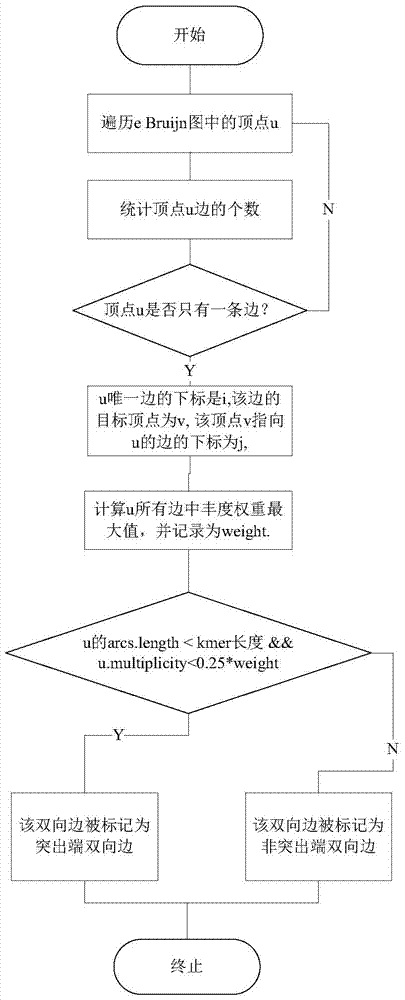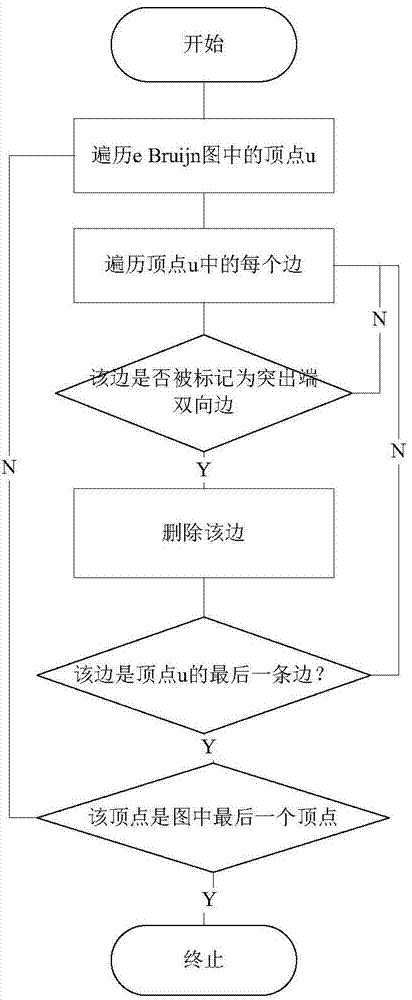Method for identifying and removing tips of bidirectional multistep De Bruijn graph
A bidirectional multi-step, protruding end technology, applied in special data processing applications, instruments, electrical digital data processing, etc., can solve the problem of reducing the reapt area and affecting the quality of the assembly, and achieve the effect of increasing the length and improving the quality.
- Summary
- Abstract
- Description
- Claims
- Application Information
AI Technical Summary
Problems solved by technology
Method used
Image
Examples
Embodiment Construction
[0044] The present invention will be described in further detail below in conjunction with the accompanying drawings and specific embodiments.
[0045] The embodiment of the present invention provides a method for identifying and removing overhangs of a bidirectional multi-step De Bruijn graph, comprising steps,
[0046] S1. Read the sequencing data source file, and construct a bidirectional multi-step De Bruijn diagram;
[0047] S2, setting the data structure of each vertex u in the bidirectional multi-step De Bruijn graph, and identifying the bidirectional edge at the protruding end of the bidirectional multi-step De Bruijn graph;
[0048] S3. Removing the bidirectional edges at the protruding end of the bidirectional multi-step De Bruijn graph.
[0049] Among them, if a vertex u has only one bidirectional edge, and the length of the bidirectional edge is less than the length of kmer, and the weight of the bidirectional edge is less than 0.25 times the maximum weight of all...
PUM
 Login to View More
Login to View More Abstract
Description
Claims
Application Information
 Login to View More
Login to View More - R&D
- Intellectual Property
- Life Sciences
- Materials
- Tech Scout
- Unparalleled Data Quality
- Higher Quality Content
- 60% Fewer Hallucinations
Browse by: Latest US Patents, China's latest patents, Technical Efficacy Thesaurus, Application Domain, Technology Topic, Popular Technical Reports.
© 2025 PatSnap. All rights reserved.Legal|Privacy policy|Modern Slavery Act Transparency Statement|Sitemap|About US| Contact US: help@patsnap.com


